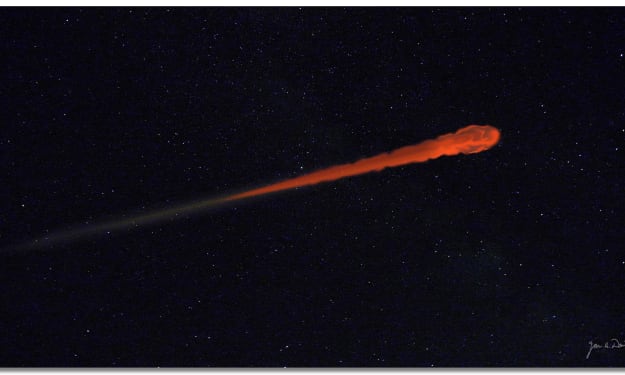
Some of the most readily available sources of knowledge are books by scientists. The writers of these books can utilize their own experiences to better illustrate the process of experimentation and research. Likewise, these books sometimes become one of their most valuable contributions to humanity, especially if their prose is easily understood even by those unfamiliar with complex scientific concepts. The accumulation of knowledge is a truly wondrous objective, and it only makes sense to learn new perspectives through the most legendary books by scientists.
Michio Kaku is perhaps one of the most popular scientists who work in the realm of imagining the future and examining the boundaries of space. In Hyperspace, Michio Kaku discusses higher dimensions and how people can better understand such concepts. Throughout the book, four forces are discussed: gravity, electromagnetism, strong force, and weak force.
As always, the concepts and issues he talks about are incredibly complex, so he utilizes analogies to help the general reader. For one, he makes use of the term Flatland, taken from a novel written by Edwin Abbott.
Hyperspace, just like many other legendary books by scientists, also provides an ample amount of discussion regarding wormholes and the multiverse. It is definitely interesting to see how he delves into such peculiar concepts using what scientists already know in the field of quantum physics.
Although this book is already more than 150 years old, Charles Darwin’s work is still read by millions of people around the world. After all, The Origin of Species basically ushered in the field of evolutionary biology. Through his groundbreaking work, Darwin was able to effectively argue that natural selection was responsible for the diversity of life. He helped humanity understand that species gradually change, developing and modifying characteristics, according to several conditions over a lengthy amount of time.
At the time of this book’s publication in 1859, the idea of evolution was widely contested. The common belief then was that species had permanent features and that humans could not possibly be related to animals. Thus, The Origin of Species led to fierce debates as it affected not only the scientific community but also the political and the theological spheres.
When Voyager 1 was about to leave the solar system in February 1990 upon fulfilling its mission, the late astronomer Carl Sagan requested that NASA have the space probe take a final picture of Earth. Now known as the Pale Blue Dot, the photograph shows planet Earth as a tiny dot. This illustrated not only the grand scale of space but also served as a reminder that humanity is not the focus of the universe.
As one of the most poignant books by scientists ever released, Carl Sagan’s sequel to Cosmos lets its reader reassess their perspective on life and their place in the universe. Moreover, the book eloquently argues that humans should strive for space exploration. For Sagan, it is important for the world to concentrate on building defenses against extraterrestrial threats and finding a new home beyond Earth.
If Charles Darwin wrote the most popular book on evolution, Stephen Hawking was responsible for writing the most accessible book on time and space. Released in 1988 by one of the world’s most remarkable theoretical physicists, A Brief History of Time was made for the general population who deserves to understand complex scientific theories. Instead of using technical terms, Hawking uses laymen's terms to explain how the universe began and how it could end.
From quarks to forces such as gravity, the scientist seamlessly goes through many concepts to expound on the Big Bang theory, general relativity, and quantum mechanics. Within two decades, A Brief History of Time had sold more than 10 million copies, proving its efficacy in communicating science to a greater population.
Released way back in 1904, the Nobel Prize-winning scientist’s work was one of the earliest known books by scientists that left a lasting influence. The book tells the amazing story of how Marie Curie discovered radium and other substances through sheer perseverance and ingenuity. With the help of physicist and husband Pierre Curie, she helped the scientific community understand natural radioactivity and the very nature of matter.
You can truly sense the determination and brilliance of Marie Curie within each page that explores not just her ideas but also the grueling laboratory research required to achieve her end results. As you reach the end of the book, you will see that Curie properly gave credits to other scientists whose ideas and works she disagreed with but nonetheless respected.
Richard Dawkins has published a lot of books since The Selfish Gene, but this remains as one of his most influential works. Published back in 1976, the book comprehensively tackled evolution. Specifically, it drew upon George C. William’s 1966 book titled Adaptation and Natural Selection: A Critique of Some Current Evolutionary Thought. As such, Dawkins’ book argues for a gene-focused perspective on evolution.
Simply put, a gene-centric view means that genetically related life forms are more likely to display selfless or altruistic behavior. Just like Charles Darwin’s work, The Selfish Gene greatly changed the field of biology. In fact, many scientists believe that Dawkins’ discussion complements what Charles Darwin worked on. Since then, the book has sold more than a million copies and has been translated into more than 20 languages.
In 1999, Jane Goodall published a book detailing what she learned as she spent 40 years at the Gombe Stream National Park in Tanzania. Ten years later, the celebrated British primatologist wrote another book. After all, books by scientists such as Goodall are sought after by a good portion of the general population.
Within this decade, several milestones were reached in terms of wildlife conservation and community outreach. For one, many programs were developed to provide effective sanitation, health care, and education to the nearby communities. Likewise, The Jane Goodall Institute was successful in cooperating with the locals to work on reforestation.
Aside from Charles Dawkins and Stephen Hawking, there is no other scientist in this list that is as influential and famous as Albert Einstein. While the theoretical physicist is mostly known for developing the general theory of relativity, he also had a lot to say about other matters. In Ideas and Opinions, readers are given a view of Einstein as he ponders on peace, nuclear war, religion, and politics.
Even if you do not necessarily agree with what he has to say, the German scientist provides plenty of intellectual stimulation. Beyond the heavy issues of society, Einstein also finds enough time to wonder about love, friendship, and happiness. It is through this book that one can delve into the whimsical side of a beloved scientist who always yearned to know more about life.
Published just in 2012, Krauss’ non-fiction book has definitely captured the interest of the scientific community. In A Universe from Nothing, the physicist argues that a universe can indeed be formed out of nothing. Of course, Krauss is careful to note that it is a different kind of nothingness, which includes the nonexistence of space. Moreover, he believes that the universe might go back to a state of deep nothingness.
Krauss goes further to acknowledge that the processes that can lead to this reversion might be too complex for humanity to understand. He also went on to state that these processes might not even need any external source controlling its actions. While the topic is complex, Krauss manages to explain this with concise statements and brilliant humor.
After getting nominated for the Pulitzer Prize with The Elegant Universe, Brian Greene published another book discussing the various theories and concepts crucial to understanding the universe. From the Heisenberg Uncertainty Principle and Inflationary Cosmology to String Theory, the physicist cleverly explained these concepts using analogies that people can easily relate to.
Greene is interested in the nature of reality itself, and this question leads to an inquiry that will involve Albert Einstein, Isaac Newton, and the complexity of quantum mechanics. Of course, some may find his arguments controversial, but he knows these in the first place. While he communicates these scientific theories, Greene does not make the mistake of oversimplifying them. Overall, this is one of the books by scientists that can serve as a great introduction to physics.
About the Creator
R Romero
Sociology graduate. Film, book, history, anime, consumer tech, and video content enthusiast.






Comments
There are no comments for this story
Be the first to respond and start the conversation.